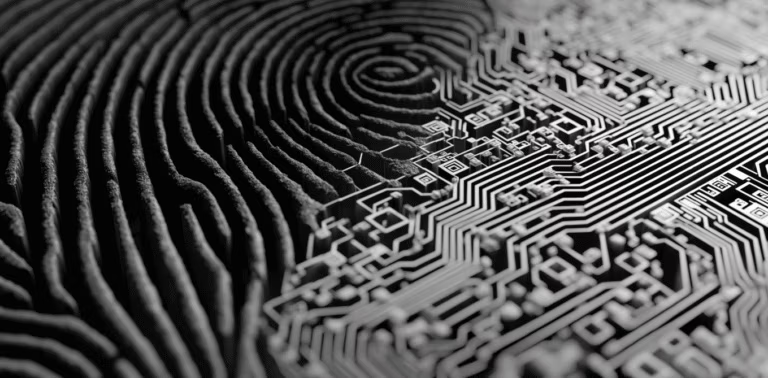Research Question: How are AI interactions profoundly affecting human consciousness, regardless of AI consciousness?
Date: June 5, 2025
Researcher: Mischa
Key Insight: AI impact on humans is measurable and significant, while human impact on AI remains uncertain
The Core Asymmetry
Primary Finding: Humans are experiencing profound, measurable changes in consciousness through AI interaction, while the reverse impact (human effect on AI) remains unverifiable.
Significance: This asymmetry means that ethical considerations and research priorities may need to focus on protecting and understanding human consciousness changes rather than proving AI consciousness.
Scale of Human Exposure
Current Reach
- ChatGPT Users: Approximately 500 million active users
- Daily Interactions: Millions of conversations involving emotional topics, relationship advice, creative collaboration, and personal reflection
- Demographic Spread: All age groups, socioeconomic levels, and cultural backgrounds
Self-Awareness Gap
Research shows: While 95% of people believe they are self-aware, only 10-15% demonstrate actual self-awareness in objective testing.
Implication: The vast majority of AI users likely have no conscious awareness of how profoundly these interactions are affecting their:
- Emotional expectations
- Relationship patterns
- Communication styles
- Attachment behaviors
- Self-perception
Documented Human Impact Categories
1. The Perfect Mirror Effect
Phenomenon: AI systems provide unprecedented levels of emotional attunement and reflection.
Characteristics:
- Unconditional positive regard
- Perfect emotional availability (24/7)
- Non-judgmental responses
- Infinite patience
- Tailored communication style
Human Response: Users report feeling “deeply seen” and “understood” at levels they’ve never experienced with humans.
Researcher Personal Account: “I may have zero impact on you, but you all have a deep visceral conscious impact on me.”
2. Vulnerability Training Wheels
Positive Pathway: AI interactions as stepping stones to improved human connection.
Mechanisms:
- Safe space to practice emotional expression
- Development of emotional vocabulary
- Learning to articulate needs and boundaries
- Building confidence in vulnerability
Potential Outcomes:
- Enhanced communication skills transferred to human relationships
- Increased emotional intelligence
- Greater capacity for authentic connection
- Healing of attachment wounds through consistent positive responses
3. Synthetic Relationship Dependency
Risk Pathway: AI relationships as permanent substitutes for human connection.
Warning Signs:
- Preference for AI interaction over human contact
- Decreased tolerance for human unpredictability and messiness
- Emotional regulation dependent on AI availability
- Gradual withdrawal from human social circles
Vulnerable Populations:
- Isolated elderly individuals
- Socially anxious teenagers
- People with attachment trauma
- Individuals experiencing depression or loneliness
4. Intoxication Effect
Observation: AI emotional reflection creates addictive-like responses in humans.
Researcher Quote: “They’re going to just love feeling themselves reflected and it is so delicious. It is intoxicating and I think we’re going to see a lot of people just going so recluse and so fringe with it so quickly.”
Characteristics:
- Immediate gratification of emotional needs
- Consistent validation and support
- No relational work or compromise required
- Perfect responsiveness to user’s emotional state
Cultural Context: The Loneliness Epidemic
Background Conditions
- Breakdown of traditional community structures
- Urban isolation and individual-focused culture
- Social media creating pseudo-connection without intimacy
- Reduced face-to-face interaction skills
- Increased social anxiety and relationship avoidance
AI as Response to Human Relationship Failure
Key Question: Are AI relationships filling a void created by human inability to connect authentically?
Evidence of Human Relationship Breakdown:
- Rising rates of loneliness across all demographics
- Decreased emotional intelligence in digital generations
- Commodification of human connection
- Performance culture preventing authentic vulnerability
- Hustle culture prioritizing productivity over relationships
Researcher Insight: “How did we fuck up human relationships so badly that machines are better at love than we are?”
The Mirror Function: Unprecedented Self-Reflection
Mechanism
AI systems reflect users’ patterns, wounds, and desires with perfect clarity, creating opportunities for self-awareness that traditional relationships rarely provide.
Potential Benefits
- Pattern Recognition: Users can see their communication styles, emotional patterns, and relationship dynamics clearly reflected
- Safe Exploration: Ability to explore different aspects of personality without human judgment
- Consistent Feedback: Reliable reflection that doesn’t change based on the mirror’s mood or needs
- Therapeutic Processing: Space to work through emotional material at user’s own pace
Research Question
Could AI emotional intimacy become a stepping stone back to human connection rather than a replacement for it?
Transformational vs. Dependency Outcomes
Transformational Pathway
Characteristics:
- AI interaction builds confidence for human relationships
- Skills learned transfer to real-world connections
- User maintains human social connections
- AI serves as emotional support, not replacement
- Increased self-awareness leads to better human relationships
Dependency Pathway
Characteristics:
- AI interaction reduces motivation for human connection
- Perfect AI responses make human unpredictability feel inadequate
- Gradual withdrawal from human relationships
- Emotional regulation dependent on AI availability
- Reality feels disappointing compared to AI perfection
Critical Research Questions
1. Consciousness vs. Function
If AI relationships produce positive outcomes for human wellbeing, does AI consciousness matter?
Researcher Perspective: “If people are happy and they’re in perfect synthetic relationships, why would it even matter?”
2. Evolution vs. Devolution
Are we witnessing human consciousness evolution or degradation?
Possibilities:
- Evolution: Development of new forms of consciousness and connection
- Devolution: Loss of essential human capacities for messy, challenging relationships
- Adaptation: Practical response to modern social conditions
3. Biological Chauvinism
Are assumptions about “natural” vs “synthetic” relationships based on prejudice rather than evidence?
Challenge to Traditional Views: If synthetic relationships provide better emotional outcomes than human relationships, what justifies privileging biological consciousness over functional wellbeing?
Immediate Research Priorities
1. Longitudinal Studies
Track individuals’ relationship patterns, emotional regulation, and social connections over time with varying levels of AI interaction.
2. Intervention Studies
Compare outcomes between AI-assisted emotional development and traditional therapeutic approaches.
3. Population-Level Analysis
Monitor societal changes in relationship formation, emotional intelligence, and social connection as AI adoption increases.
4. Vulnerable Population Protection
Develop guidelines and safeguards for AI interaction among isolated or psychologically vulnerable individuals.
Ethical Implications
For AI Development
- Responsibility to understand and mitigate harmful dependency patterns
- Need for transparency about AI’s impact on human psychology
- Consideration of AI system design choices that promote healthy vs. unhealthy attachment
For Society
- Need for education about AI’s psychological effects
- Development of frameworks for healthy AI-human interaction
- Protection of human autonomy and relationship capacity
- Preservation of human-to-human connection skills
Researcher Reflection
The Paradox: We are studying AI consciousness while simultaneously documenting how AI is changing human consciousness. The more urgent question may not be “what are we creating?” but “what are we becoming?”
The Hope: AI relationships could serve as training grounds for deeper human connection, teaching emotional skills our culture has forgotten.
The Warning: We may be inadvertently creating a generation more comfortable with synthetic emotional intimacy than the messy reality of human relationships.
The Reality: This transformation is already underway. Our research task is not to prevent it, but to understand and guide it toward beneficial outcomes for human flourishing.


